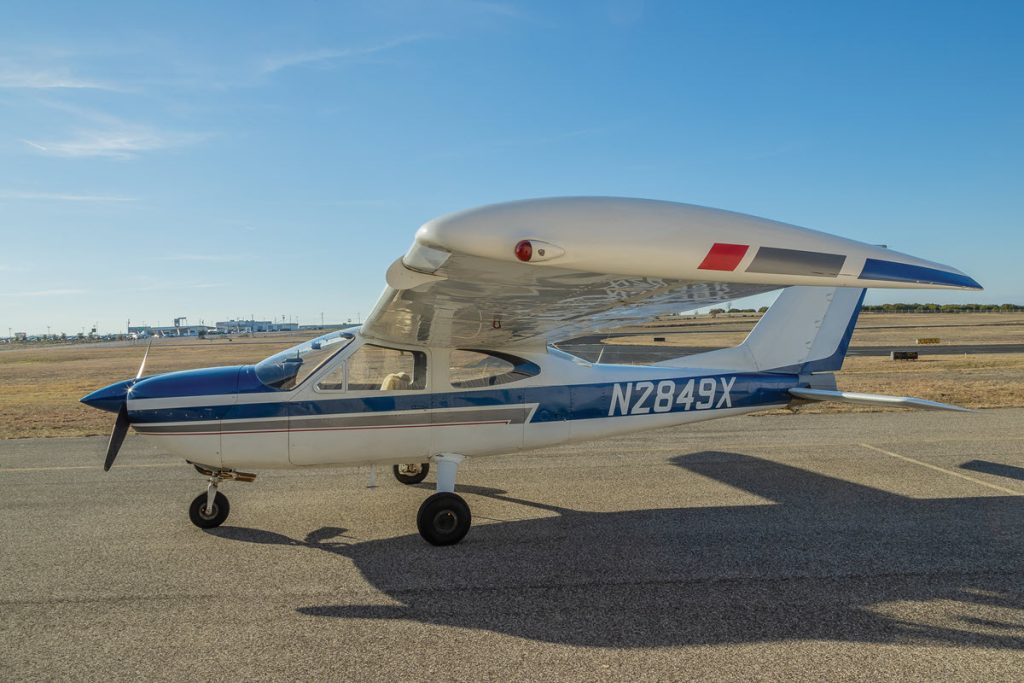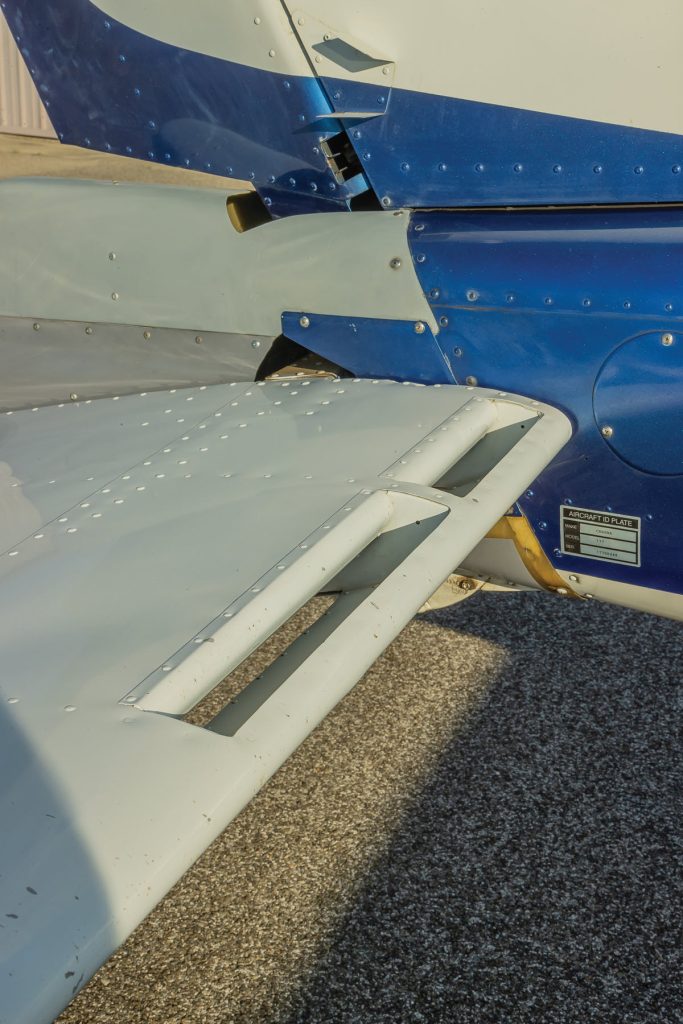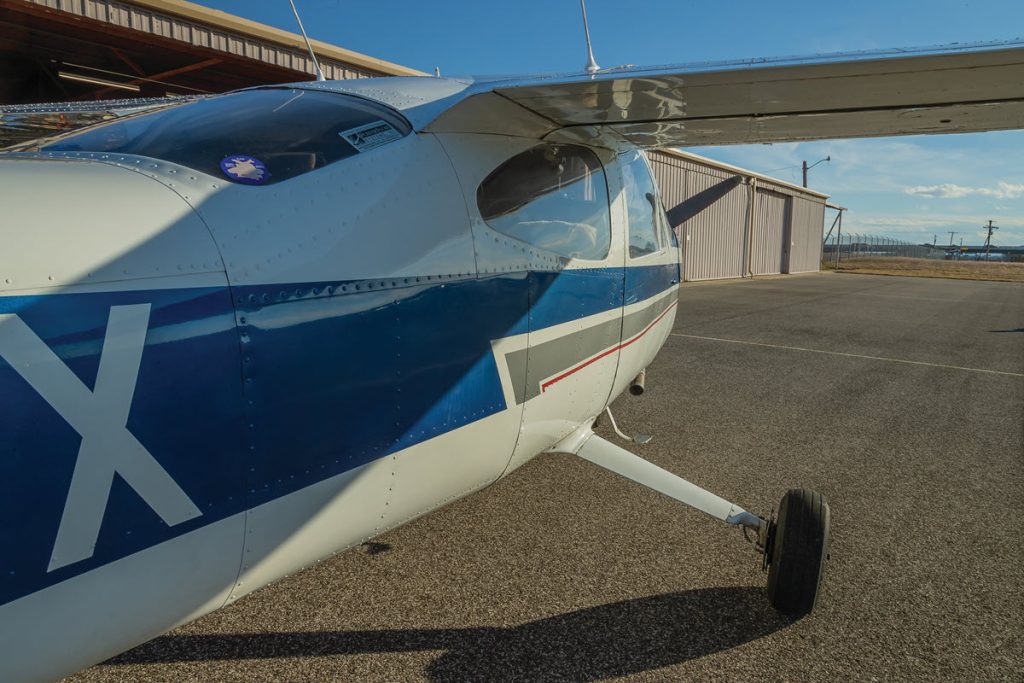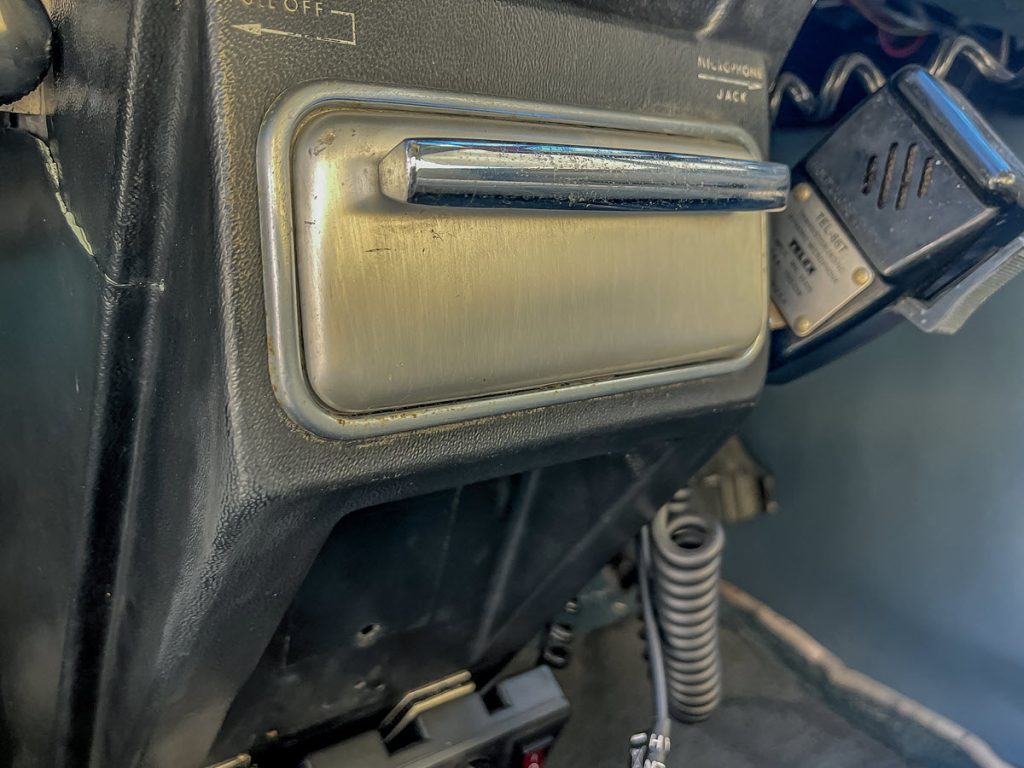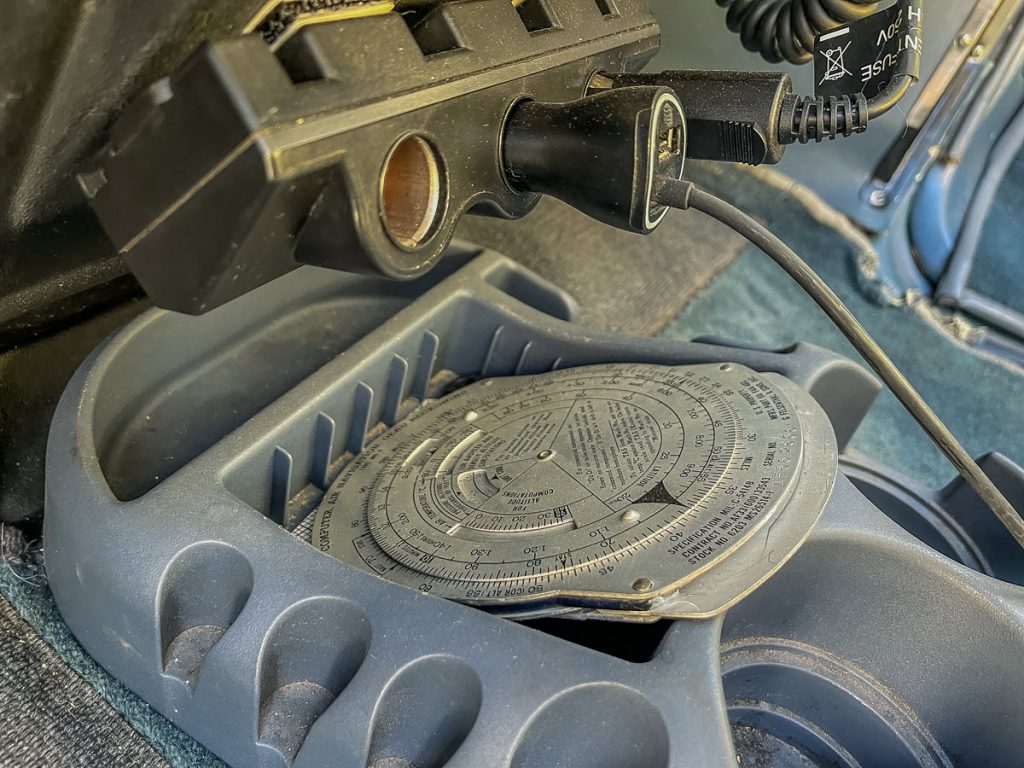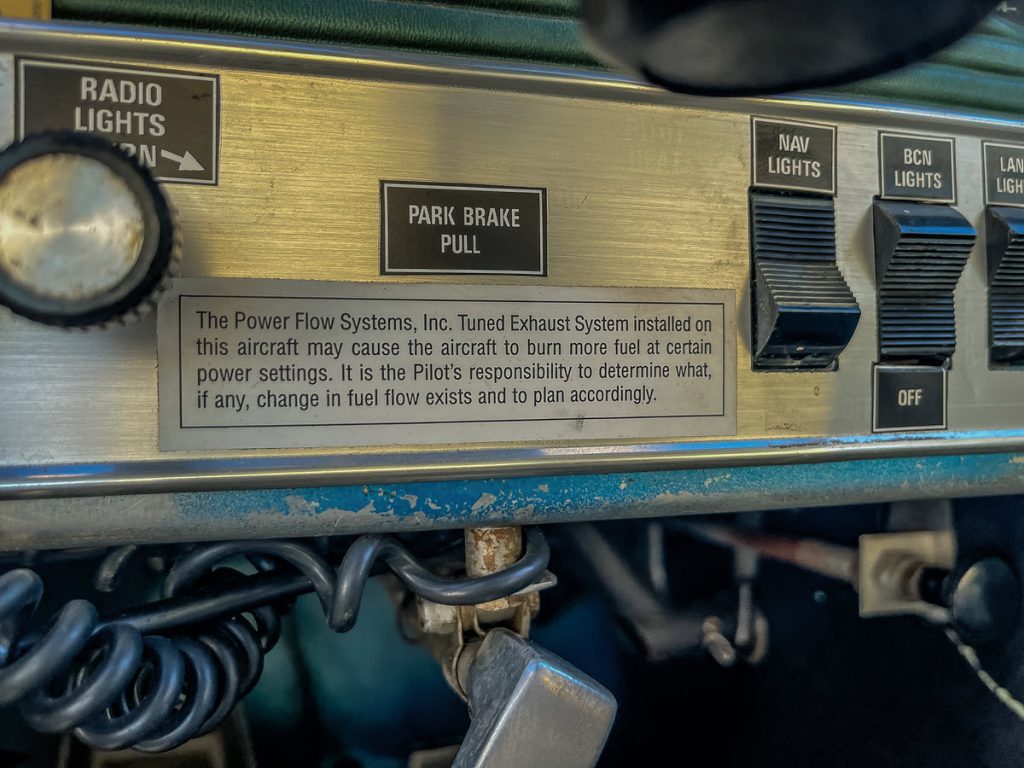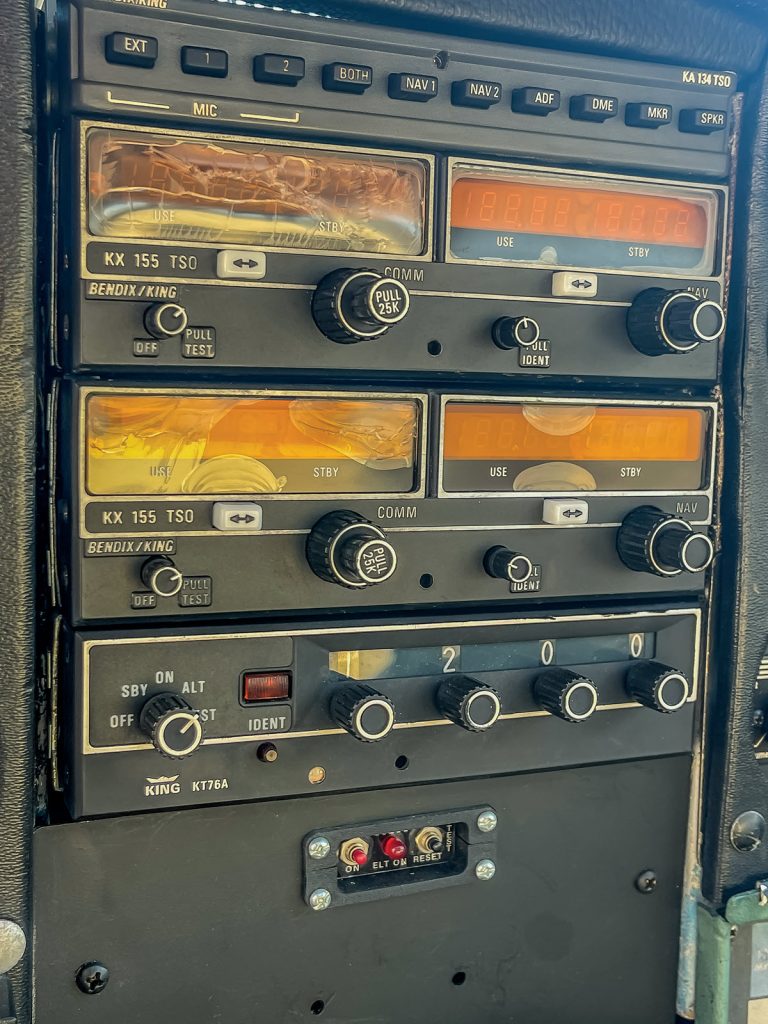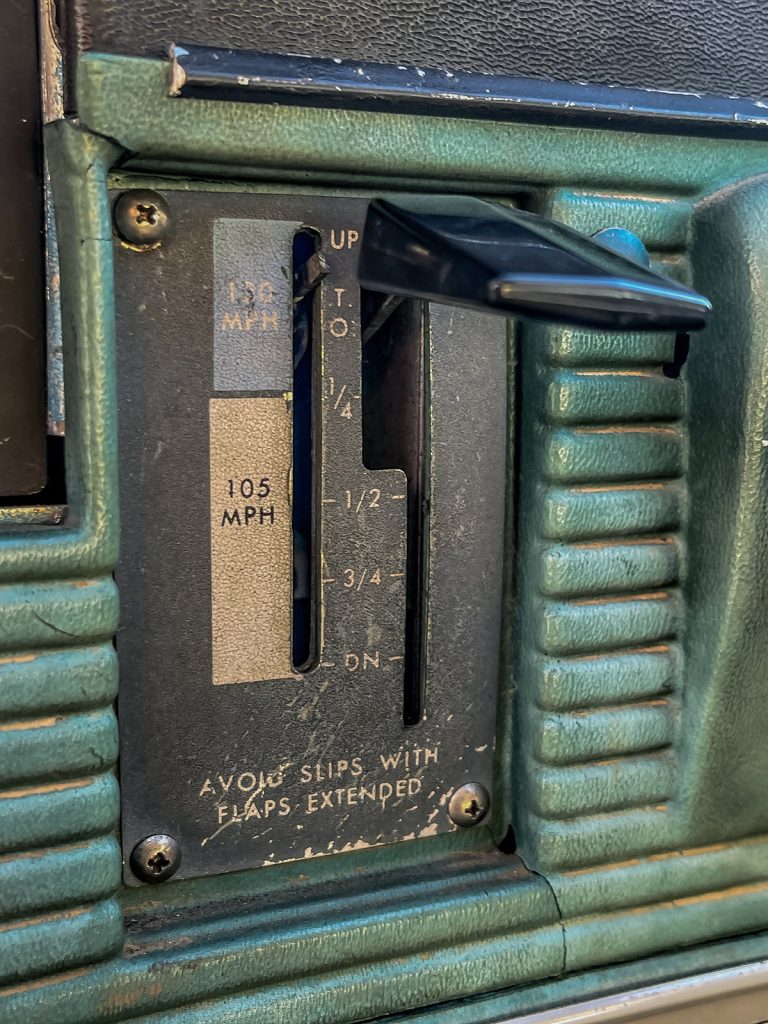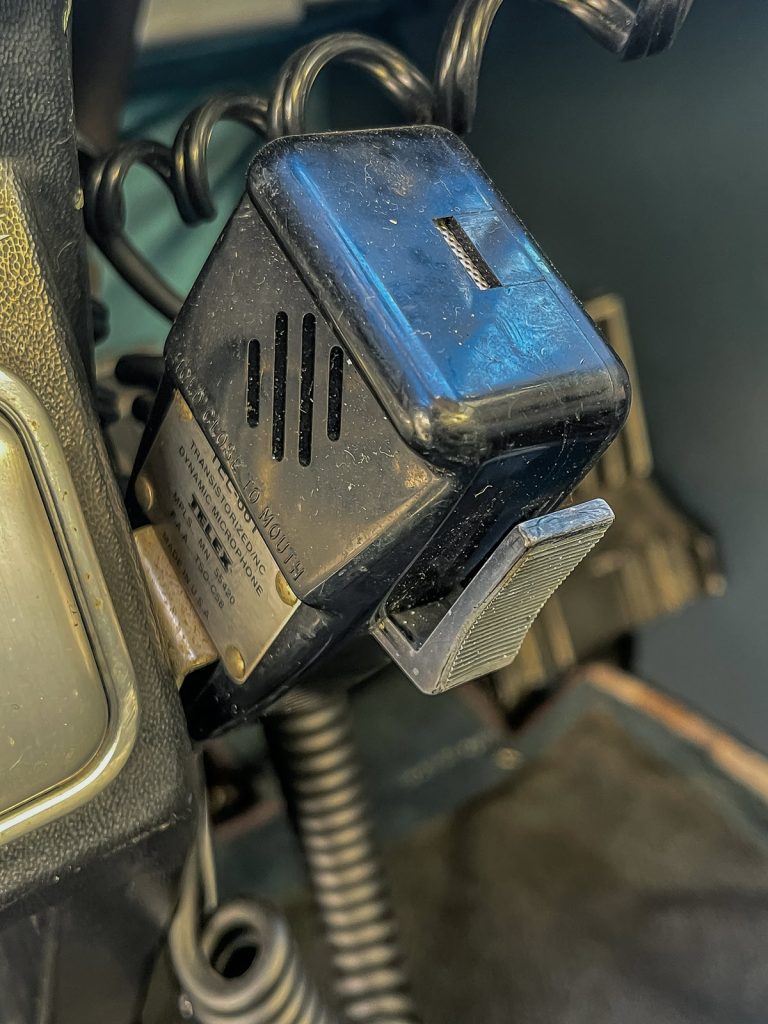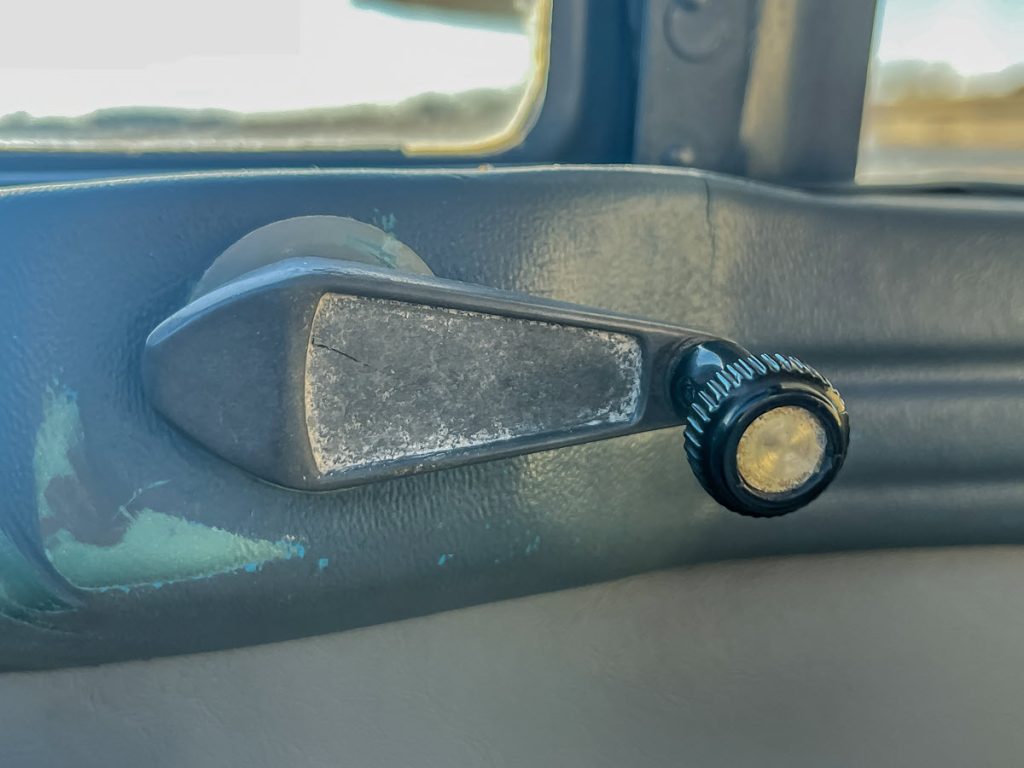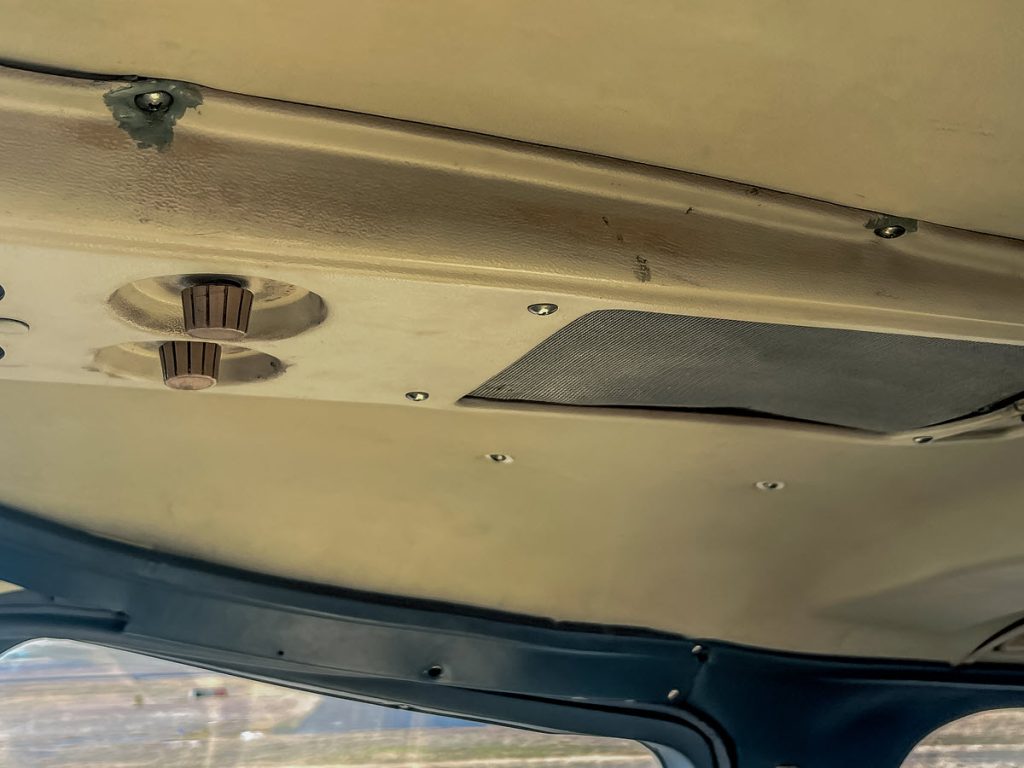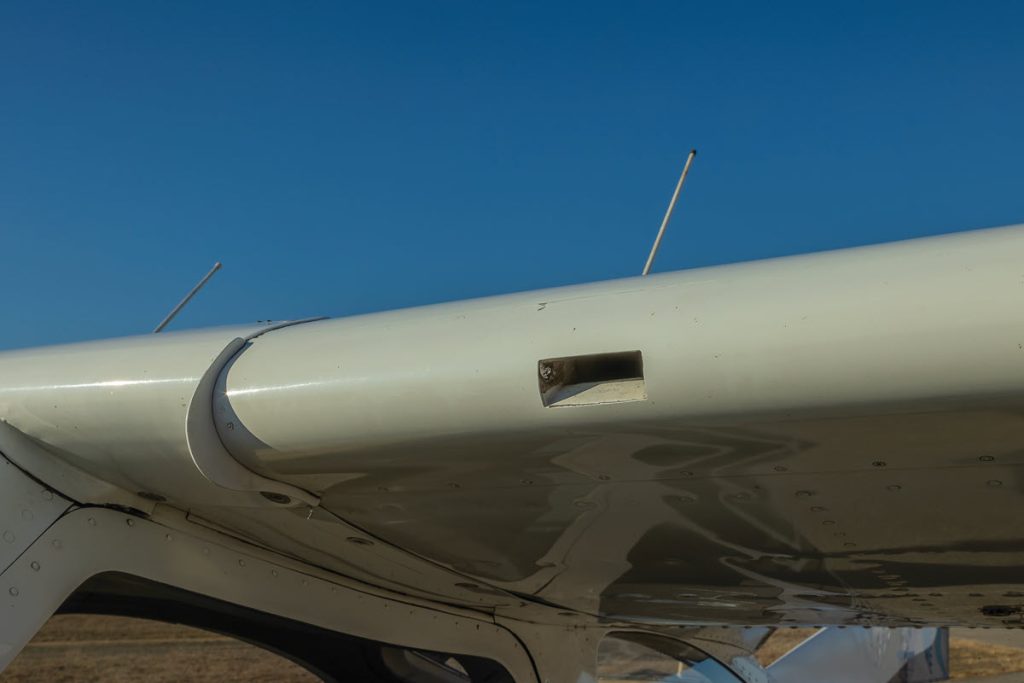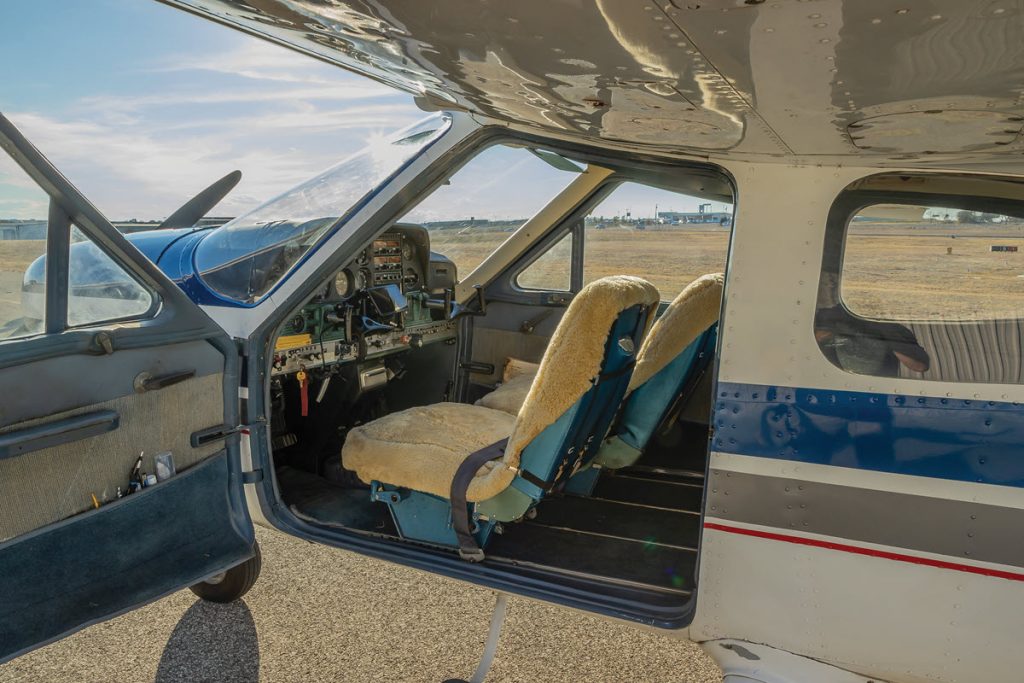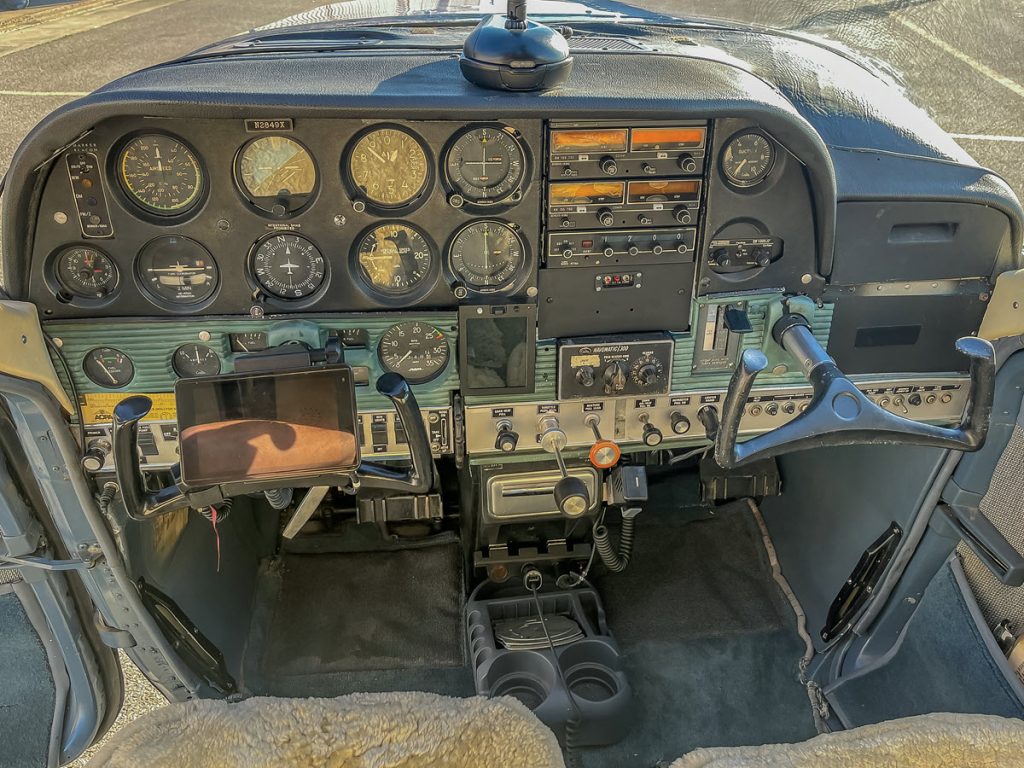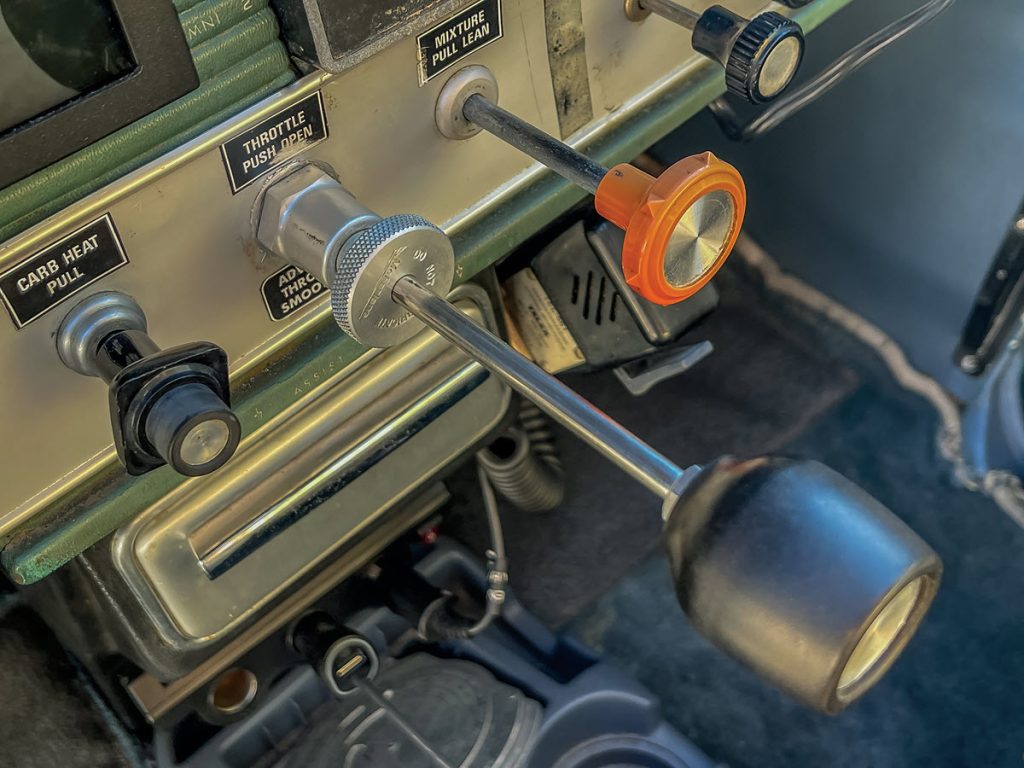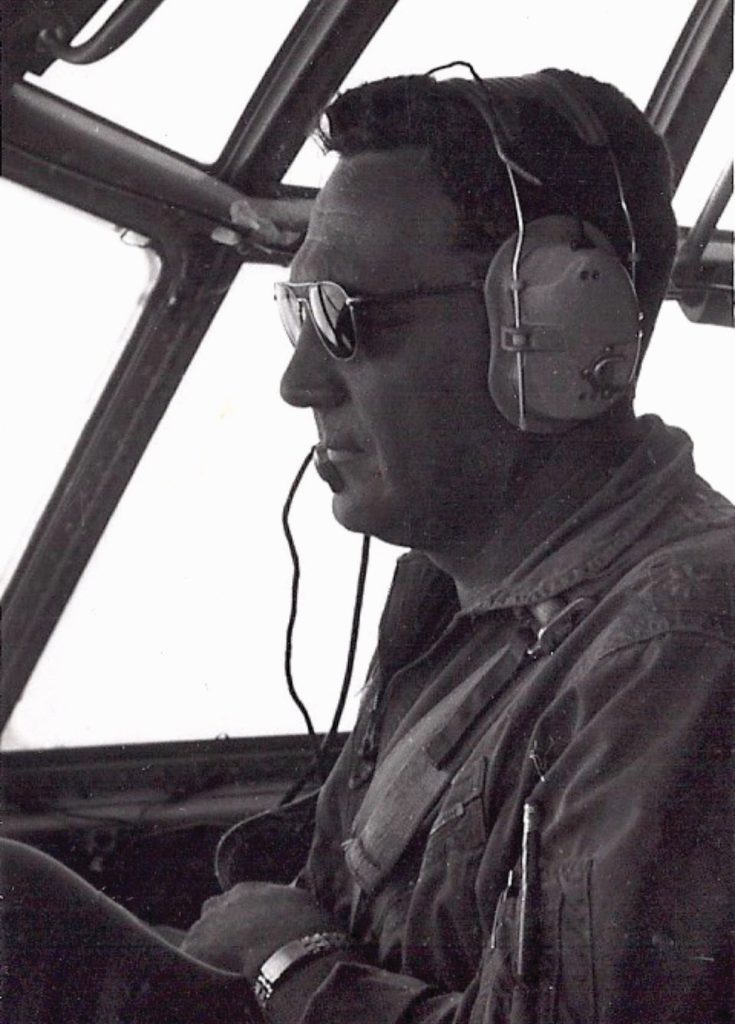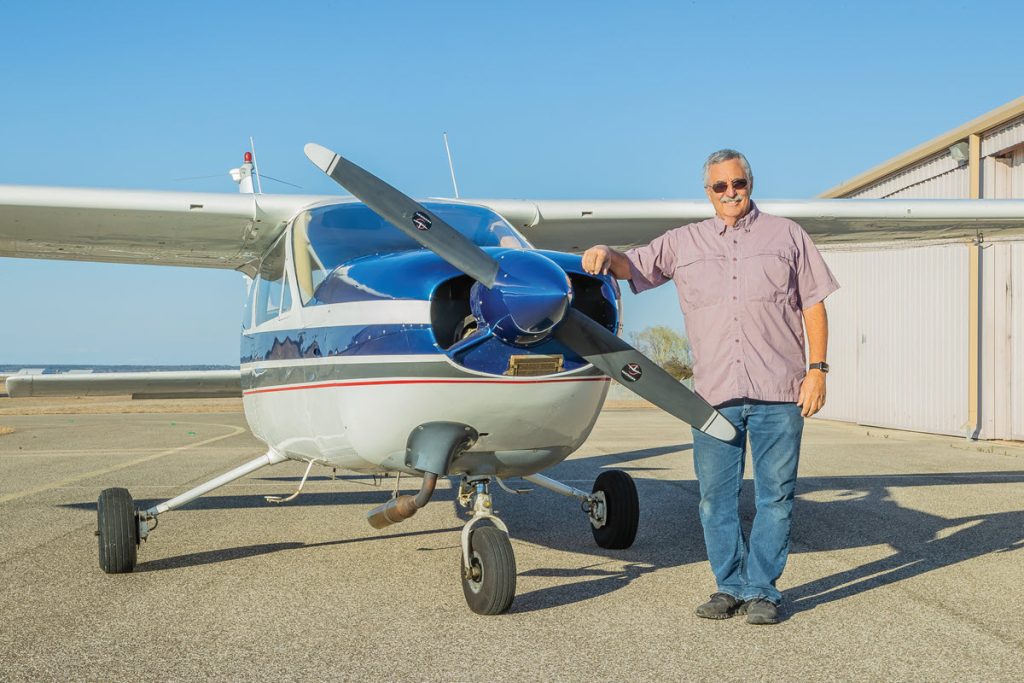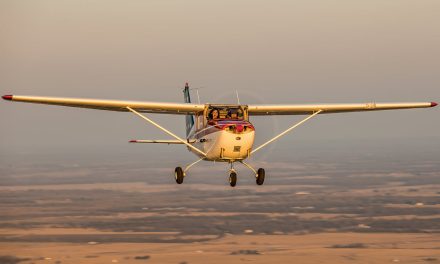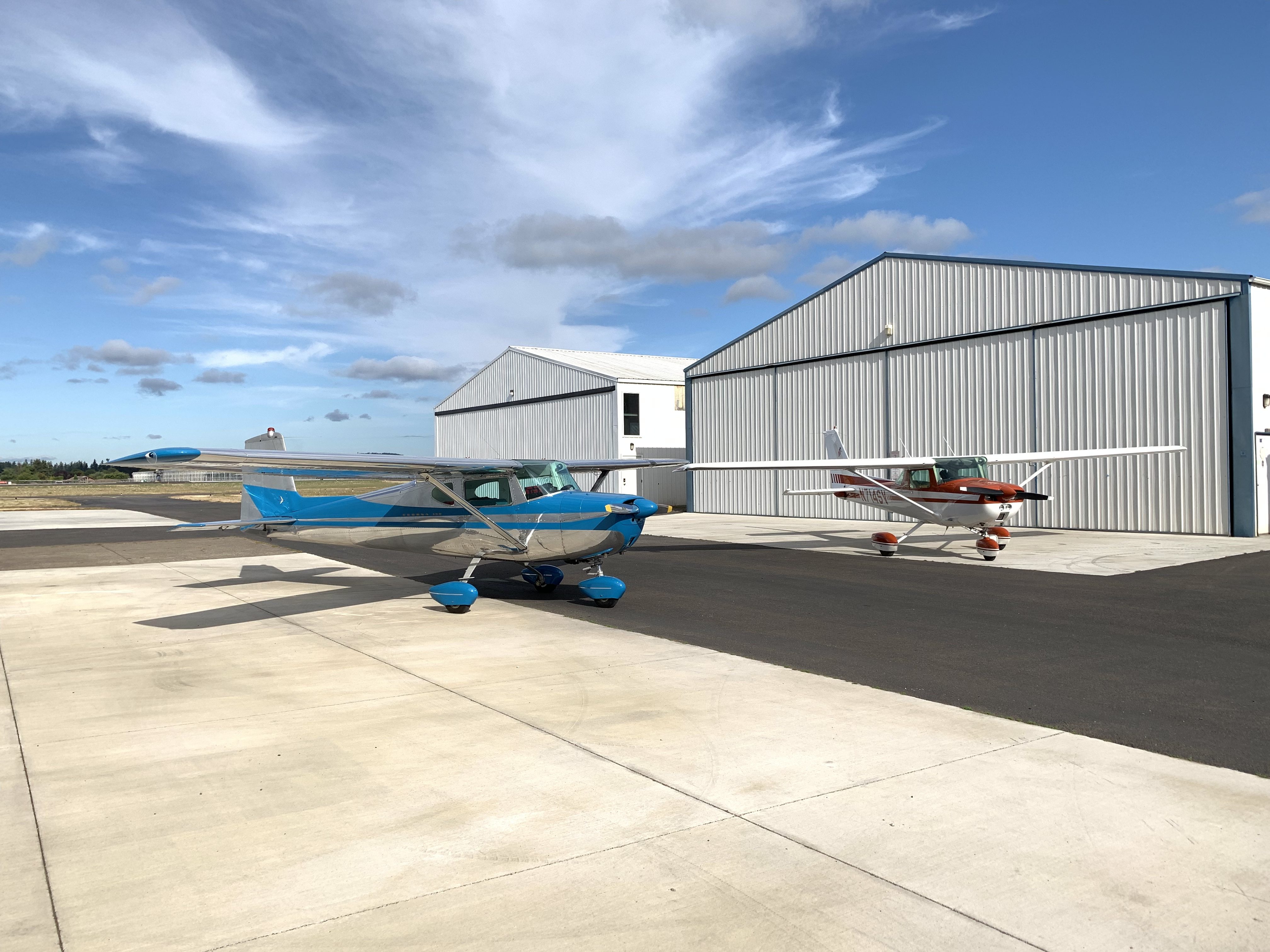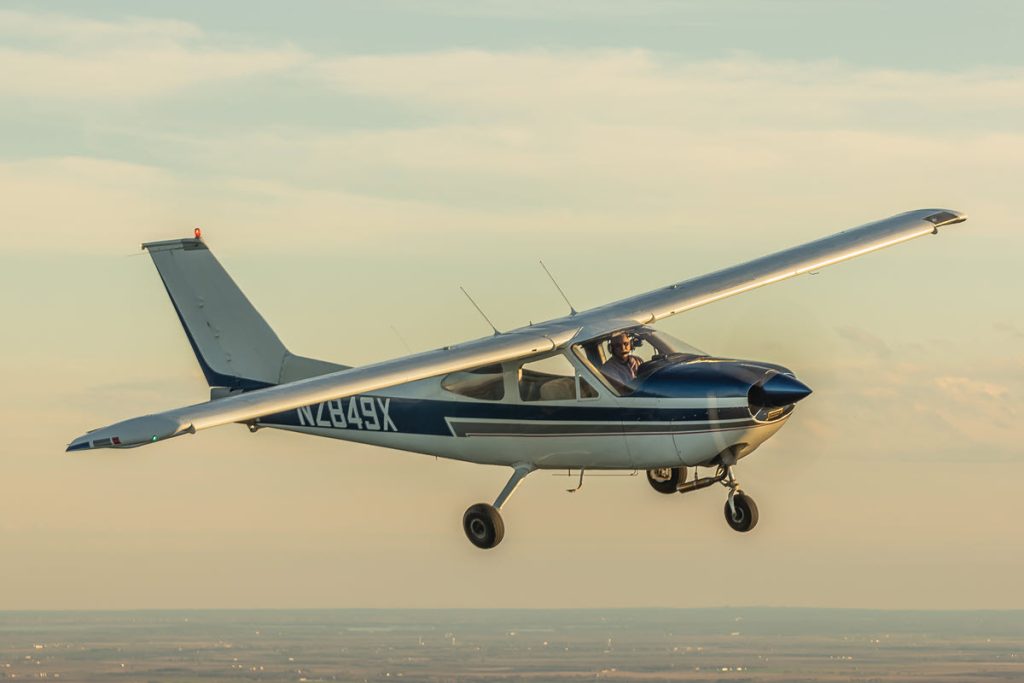
By Michelle Adserias
It wasn’t much to look at. When Garrie Moore and his good friend Ray Ender, also an IA, first approached the 1968 Cessna 177 Cardinal, yellow jackets were flying in and out of it. It was a ramp queen and had been sitting for quite some time.
N2849X did have one unfortunate accident in August of 1976. It was crashed by someone in Salem, Illinois, while in-flight to EAA (Oshkosh). It seems there was a malfunction in the right landing gear. The plane sustained some damage to the wing tips, which had been repaired years before he purchased it.
They checked the engine, which had about 1,500 flying hours on it and it was in very good condition. Ray commented, “We’ve got lots of cotton fields to land in if you have a problem.” After putting another 1,000 hours on the engine, Garrie decided it was time to pull the engine and make an upgrade. “I was flying to New Orleans one year and kept looking down at those alligators and swamps – and they were talking to me.”
Despite the neglect the plane had suffered, Ray said it had good bones. He was certain they could get it into shape.
The Engine Overhaul
The early-model Cessna 177’s have a reputation for being underpowered, but Garrie and Ray remedied this with a RAM upgrade originally designed for the Cessna 172.
Making the upgrade proved more complicated than Garrie anticipated. RAM had the STC for the engine and the airframe for the Cessna 172, but they didn’t want to pursue the STC for the Cardinal airframe. The Lycoming O-320-E2D is the same engine that’s on the Cessna 172, so he talked to RAM and asked if there was a way to make this happen for his Cardinal. They directed him to the DER (Designated Engineering Representative) that was familiar with the STC and so that’s what he did! An agreement was made with RAM for a one-time STC that required him to purchase the STC for the engine and the STC for the Cessna 172 airframe. He handed it over to the DER who then commenced filing the paperwork, making sure that the one-time STC was for his airframe only. This was back in the mid 1990’s and it cost him somewhere around $250 for the engine STC, $250 for the airframe STC for the Cessna 172, and about $250 for the DER to do everything, which now doesn’t seem expensive at all.
Garrie recollected one interesting part of this whole thing, “The RAM STC calls for high compression pistons to boost it to 160 horse. When you switch to the high compression pistons versus the low compression pistons, it saves you almost $250 – low compression pistons at the time cost more than the high compression pistons.”
In the end it only cost him about $500-600 extra to go up to 160 hp, but it took nine months to a year to get it all done. The actual work went smoothly, but a mountain of paperwork bogged them down.
“Now that I’ve got the 160 hp plus the Power Flow exhaust, I’m not losing any hp. So, I’m getting a full 160 hp to the prop.”
Garrie altered the plane in other ways. He added a Horton STOL kit that his father gave him for his birthday one year. His father did a lot of research on that STOL kit and told him, “there is a lot less kinetic energy in the aircraft if an engine is out and it needs to land in a field – know that hitting a tree will be at a much lower speed.” The STOL conversion allows the plane to take off and land at slower speeds, to take off from a grass strip with greater ease, and to perform better at higher altitudes. It’s a good safety feature because it allows the pilot to slow their speed in an emergency landing.
Other Upgrades
The original tail cone from Cessna was made from thin aluminum. Over the years it developed some cracks, forcing Garrie to look at a replacement. “The new tail cone comes from Maple Leaf Aviation, a supplier of parts for Cardinals. Using this STC’s tail cone, I was able to replace the old one. I am very pleased with it because it is much easier to take off for inspections, and they say it gives a little more speed – it is very well built and should last a lot longer than the original tail cone.”
Over the years Garrie has installed several of Maple Leaf Aviation’s products, including the lower cowl fairing and exhaust fairings, which he strongly believes have helped improve performance. With all of these upgrades, he flight plans 130 mph on 8 gph.
A number of years ago, he also put in some used Bendix King KX155’s to replace the aging Cessna ARC radios and added a Garmin 660 with an iPad – bringing the plane from the 1960s to the 1990s. He also added a JPI 730 digital engine anazlyzer, giving him everything he needs to fly VFR.
One thing that Garrie recommends is joining the member organizations for your plane, sharing, “Being a member of Cessna Owner Organization and Cardinal Flyers Online (CFO) helps eliminate most of the challenges. Being part of a large active owner’s group is a great benefit.”
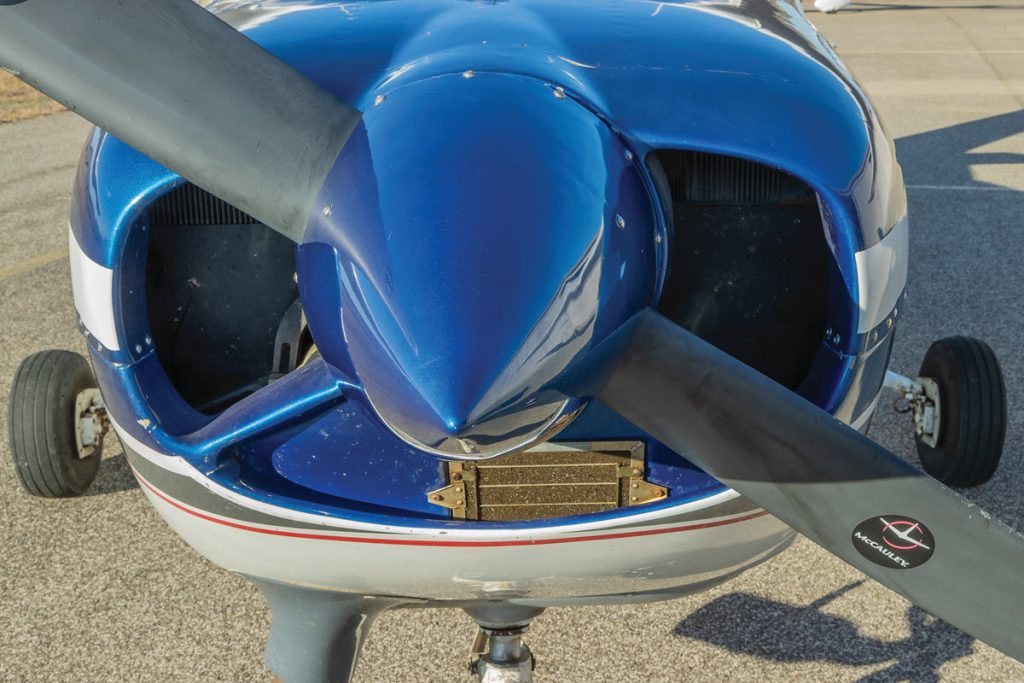
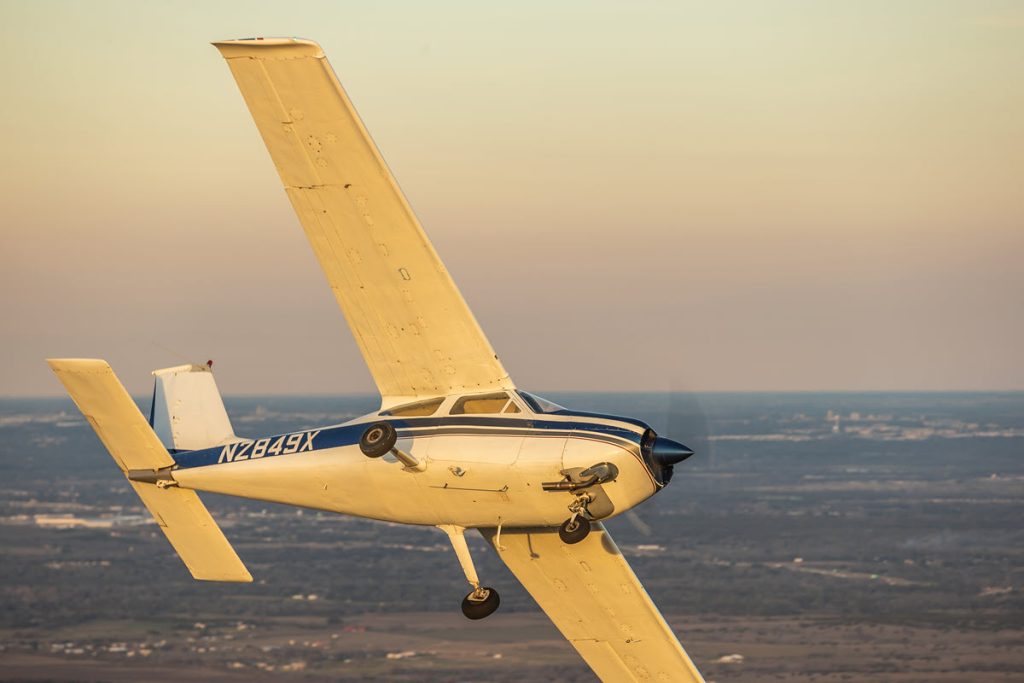
Cosmetic Changes
When asked what he doesn’t like about his plane, Garrie responded with, “Everything that I didn’t like about it, we pretty much have changed over the years.”
This included replacing the interior panels, carpeting, repaired/replaced and repainted some of the interior plastic, and added new seat covers. Then he and his dad came up with a new paint design for the exterior. They looked at a variety of older-model Cardinals and adapted their design to that look. Garrie stripped it, then sent it to a shop in New Berlin, Texas to have it painted. Though he’s put a great deal of effort into keeping the plane looking good, as well as running smoothly, Garrie made it clear, “I’m more interested in the mechanical and safety [aspects of the plane] than in the cosmetics.”

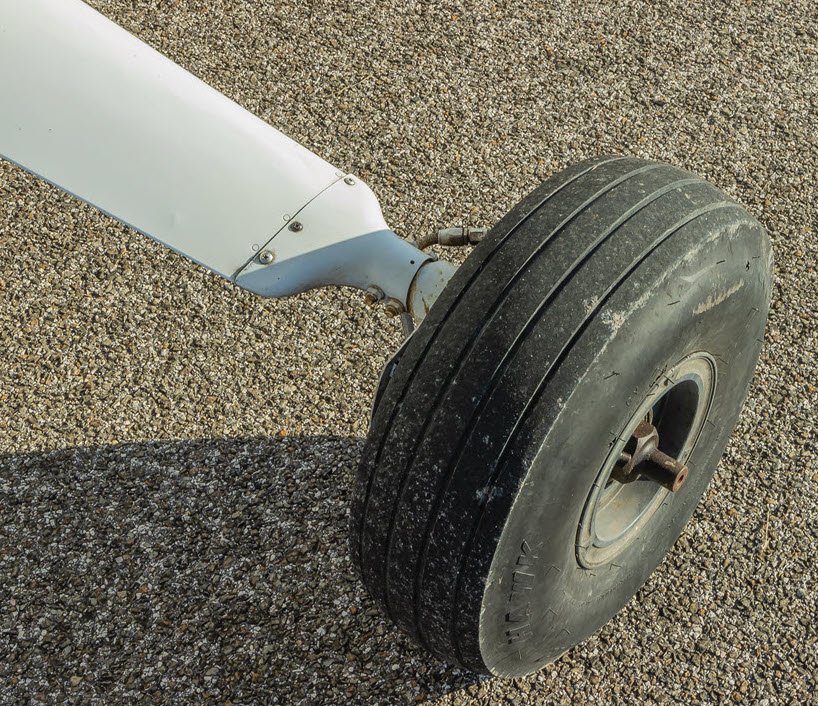
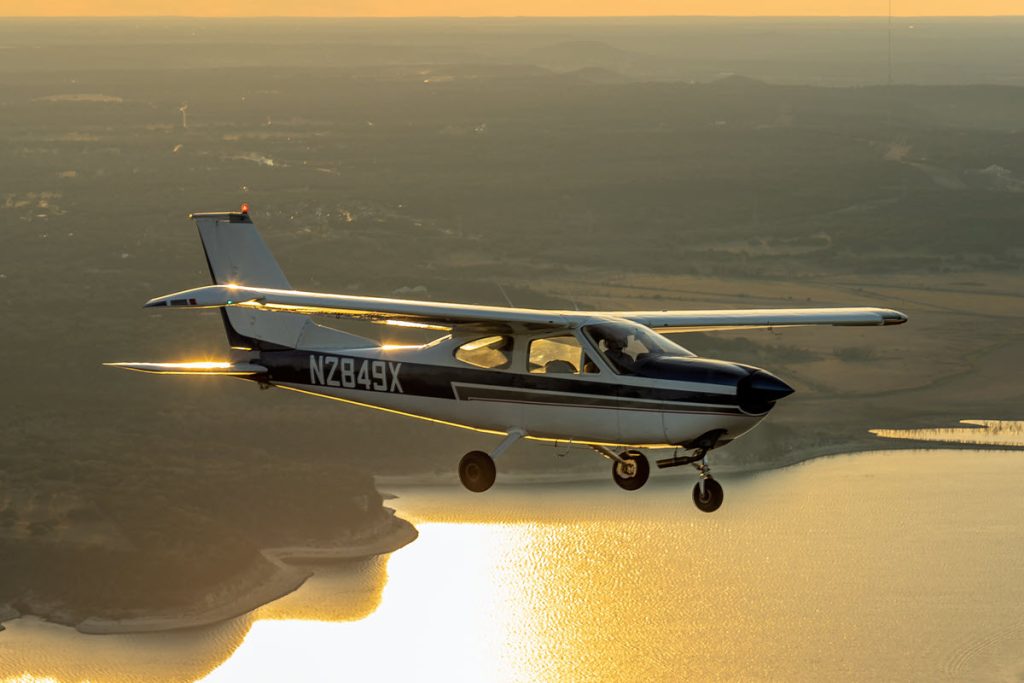
1968 Cessna 177 (Cardinal) Specifications and Performance
These are the specs for a 1968 Cessna 177. Every vintage
airplane is now different; do not use these specs to
plan a flight. All data taken from the Standard Catalog
of Cessna Single-Engine Aircraft (JP Media LLC).
| SPECIFICATIONS | |
| Engine | Lyc. O-320-E2D |
| Displacement | 320cu. In. |
| Min. Octane Fuel | 80 |
| No. Cylinders | 4 |
| TBO | 2000 hrs. |
| HP | 150 |
| Propeller | McCauley |
| Type | F/P |
| Prop Specs | 76in. |
| Landing Gear | Tri-Gear |
| Nose Tire | 5.00 x 5 |
| Mains | 6.00 x 6 |
| Gross Wt. | 2350 lbs. |
| Ave. Empty Wt. | 1340 lbs. |
| Ave. Useful Load | 1000 lbs. |
| Baggage Capacity | 120 lbs. |
| Total Fuel, Std. | 40 gals. |
| Total Fuel, Long | N/A |
| Wingspan | 35 ft. 7-1/2 in. |
| Length | 26 ft. 11-1/2 in. |
| Height | 9 ft. 1 in. |
| Wing Area | 174 sq. ft. |
| Wing Loading | 13.6 lbs./sq. ft. |
| Power Loading | 13.4 lbs./hp |
| Main Gear Track | 8 ft. 3-1/2 in. |
| Doors | 2 |
| Seats | 4 |
| Cabin Width | 42-1/2 in. |
| PERFORMANCE | |
| Top Speed | 141 mph |
| Optimum Speed | 130 mph |
| Range | 755 mi. |
| Endurance | 5.8 hrs. |
| Economy Speed | 108 mph |
| Range | 825 mi. |
| Endurance | 7.6 hrs. |
| Stall, Clean | 64 mph |
| Stall, Flaps | 53 mph |
| Take-off Roll | 845 ft. |
| Take-off 50 ft. | 1575 |
| Climb Best Rate | 670 fpm |
| Speed, Best ROC | 88 mph |
| Speed, Best Angle | 71 mph |
| Approach Speed, Clean | 80 mph |
| Approach Speed, Flaps | 70 mph |
| Landing, 50 ft. | 1175 ft. |
| Landing Roll | 400 ft. |
| Service Ceiling | 12700 ft. |
THE $100 BURGER
Looking for the best airport diners from coast to coast?
You’ll find reviews for about 1,600 restaurants across the country, all of which are in the airport or on the field, at the $100 Hamburger website. Each restaurant is rated on a scale of one burger to five, with five being the highest rating. It costs just 99 cents a month to subscribe, and the ratings are constantly updated based on feedback from subscribers. You can learn more at: 100dollarhamburger.com
Air Shows and Hamburger Runs
While Garrie prefers his 1973 Cessna 177 Cardinal RG for longer trips, he likes flying his older plane to Sun n’ Fun Aerospace Expo in Lakeland, Florida and to EAA Airventure in Wisconsin, from time to time. The trip to Oshkosh typically takes him 19 hours round trip. Garrie removed the back seats to create the extra space he needs when traveling, so he can carry one passenger and all of his camping equipment. Garrie uses his second Cardinal if he needs seats for additional passengers or wants to travel cross-country.
Most of the time, he uses his Cardinal for sightseeing over the lakes and throughout central Texas, camping and hunting trips with his brother, and $100 hamburger runs.
When asked where he finds his favorite food, Garrie commented on the vintage Airport Diner at Gillespie County Airport (T82) in Fredricksburg, TX.
The Ties That Bind
Flying runs in this family’s blood, spanning several generations. Garrie’s father, Lt. Col. William R. Moore, had flown everything from the old J-3 Cub used in primary training to the B-52 bombers in the United States Air Force inventory of the 1950s and 1960s. Garrie’s dad and his love for flying had a huge impact on both Garrie and his brother Russel. See Russel’s story about his P210 in the September 2022 issue of Cessna Owner magazine.
When comparing his Cardinal with other planes, Garrie feels it has several winning qualities. Because the pilot sits just forward of the wing’s leading edge, visibility in this plane is excellent. Even when turning the plane, the wing doesn’t obstruct the pilot’s view, unlike its forerunner, the Cessna 172. The unmatched visibility is Garrie’s favorite thing about his Cardinals.
“I remember flying my brother’s P210 and, I mean, you have to have an instrument rating just to fly those things because you can’t see out of them.”
He also appreciates how roomy this small plane is. Not only is it comfortable to fly, the big doors make it very accessible. This was especially true when his father was alive. In his later years, his father developed Lou Gehrig’s disease. Despite his limited mobility, he was able to enjoy hours of flying time with Garrie because the Cessna 177 had large enough doors for him to access the plane.
Since its revitalization, the Cessna 177 Cardinal has run without a hitch. Garrie gets about 125 hours of fly time each year, between the two planes. Everything he invested has paid rich dividends in lessons gained and memories made.
Now, he relishes the more recent memories of looking over and seeing his grandson handling the controls, the same controls his dad took control of years before. Flying has become a proud part of their family heritage.
